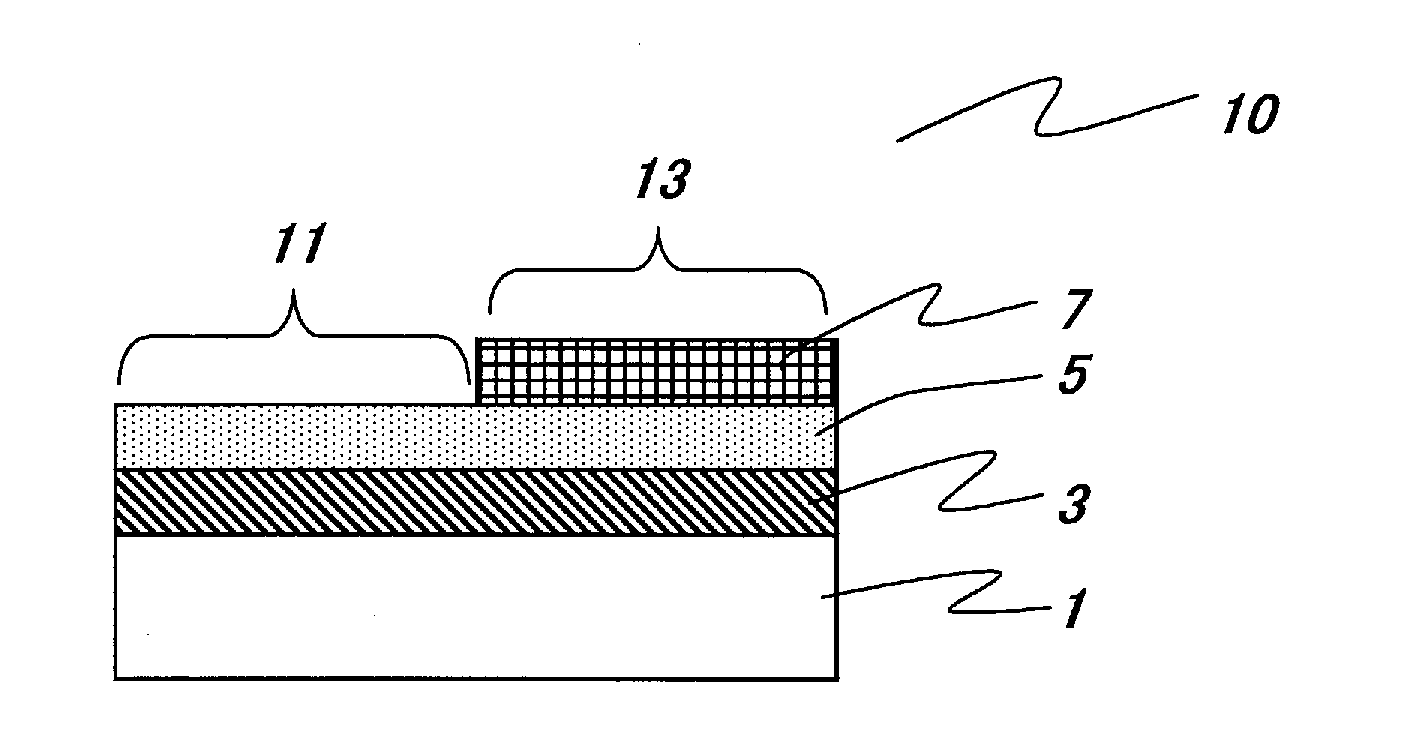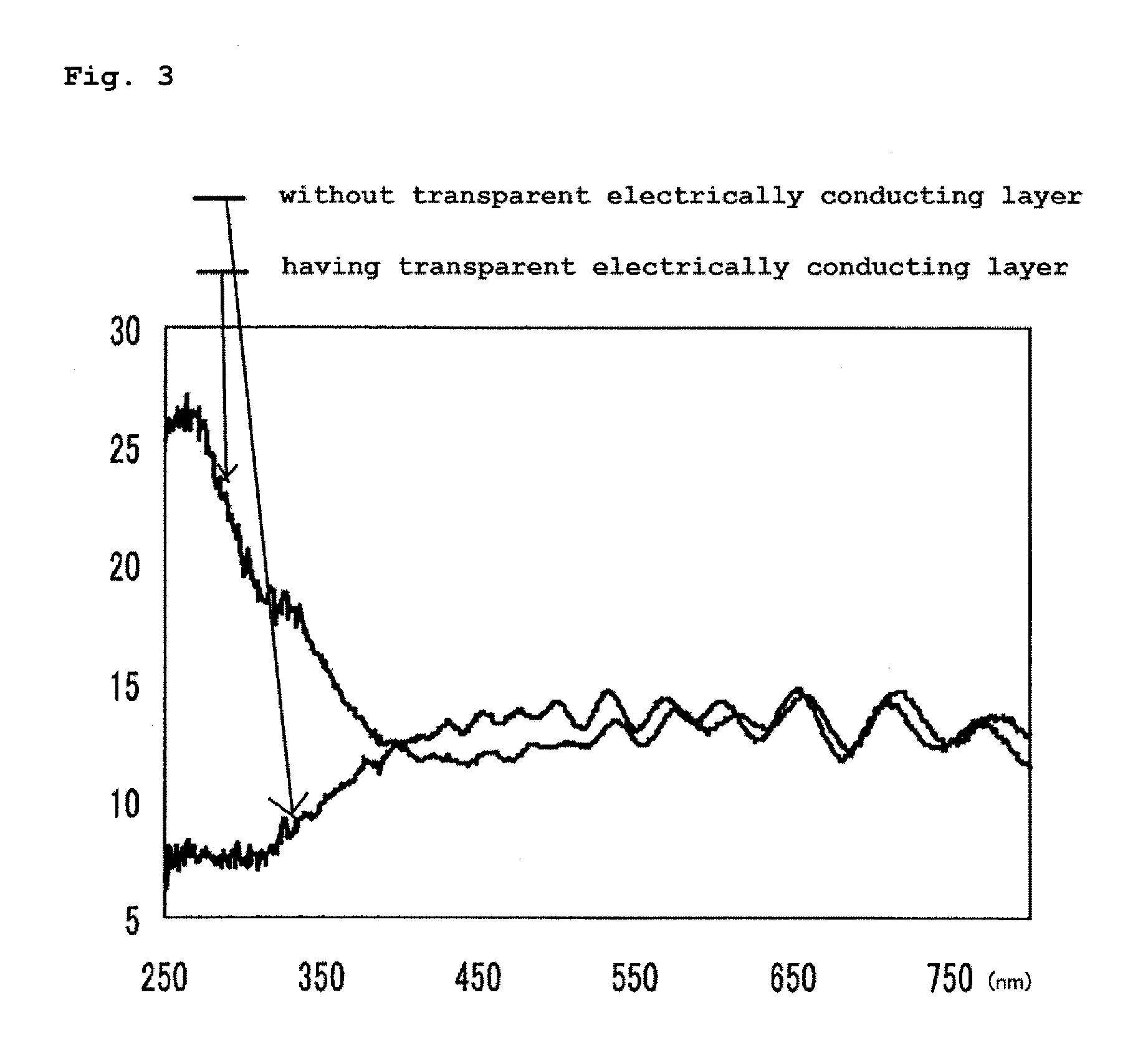Electroconductive laminate and touch panel using thereof
- Summary
- Abstract
- Description
- Claims
- Application Information
AI Technical Summary
Benefits of technology
Problems solved by technology
Method used
Image
Examples
production example 1
Production of a Phenolic Novolac Acrylate (1)
[0159]In a reaction vessel equipped with a stirrer, a thermometer, a dropping funnel and a reflux apparatus, 150 g of phenol novolac resin (a weight average molecular weight of 700 to 900, an epoxy equivalent of 150 to 200) and 550 g of epichlorohydrin were mixed, and 110 g of an aqueous solution of sodium hydroxide (48.5%) was added dropwise for 2 hours under a temperature of 100° C. and a reduced pressure of 100 to 200 mmHg.
[0160]After the reaction was finished, a reaction temperature of the reaction mixture was lowered to a room temperature, and excess amounts of an aqueous solution of sodium hydroxide were neutralized with an acid, then the reaction mixture was heated under a reduced pressure to remove excess amounts of epichlorohydrin.
[0161]Next, the resulting reaction mixture was dissolved in methyl isobutyl ketone, and a salt of byproduct was removed by water filtration to obtain a solution of phenol novolac epoxy resin.
[0162]To th...
production example 2
Production of a Phenolic Novolac Acrylate (2)
[0164]In a reaction vessel equipped with a stirrer, a thermometer, a dropping funnel and a reflux apparatus, 150 g of phenol novolac resin (a weight average molecular weight of 900 to 1100, an epoxy equivalent of 150 to 200) and 550 g of epichlorohydrin were mixed, and 110 g of an aqueous solution of sodium hydroxide (48.5%) was added dropwise for 2 hours under a temperature of 100° C. and a reduced pressure of 100 to 200 mmHg. After the reaction was finished, a reaction temperature of the reaction mixture was lowered to a room temperature, and excess amounts of an aqueous solution of sodium hydroxide were neutralized with an acid, then the reaction mixture was heated under a reduced pressure to remove excess amounts of epichlorohydrin.
[0165]Next, the resulting reaction mixture was dissolved in methyl isobutyl ketone, and a salt of byproduct was removed by water filtration to obtain a solution of phenol novolac epoxy resin.
[0166]To the re...
example 1
[0168]A hard coating composition was prepared by using the phenolic novolac epoxy acrylate (1) obtained by Production example 1 as a component (A), an ethoxylated orthophenylphenol acrylate (an acrylate having 1 mol of ethylene oxide structure, a viscosity at 25° C. of 130 mPa·s and a refractive index of 1.577) as a component (B), a bisphenol A ethylene oxide (2 mols)-modified diacrylate as a component (C) and a pentaerythritol triacrylate as an another (meth)acrylate. Raw materials shown in Table 1 were mixed in the solid amounts shown in Table 1, and were stirred to obtain a hard coating composition.
[0169]A viscosity of the component (B), the ethoxylated orthophenylphenol acrylate, was measured at a number of rotations of 60 rpm by a B-type viscometer (TVB-22L, manufactured by Toki Sangyo co., ltd.) and a M1 Rotor, after 100 ml of the component (B), the ethoxylated orthophenylphenol acrylate, was sampled in a glass container as a test sample and was kept under a temperature of 20°...
PUM
| Property | Measurement | Unit |
|---|---|---|
| Temperature | aaaaa | aaaaa |
| Percent by mass | aaaaa | aaaaa |
| Percent by mass | aaaaa | aaaaa |
Abstract
Description
Claims
Application Information
 Login to View More
Login to View More - R&D
- Intellectual Property
- Life Sciences
- Materials
- Tech Scout
- Unparalleled Data Quality
- Higher Quality Content
- 60% Fewer Hallucinations
Browse by: Latest US Patents, China's latest patents, Technical Efficacy Thesaurus, Application Domain, Technology Topic, Popular Technical Reports.
© 2025 PatSnap. All rights reserved.Legal|Privacy policy|Modern Slavery Act Transparency Statement|Sitemap|About US| Contact US: help@patsnap.com



